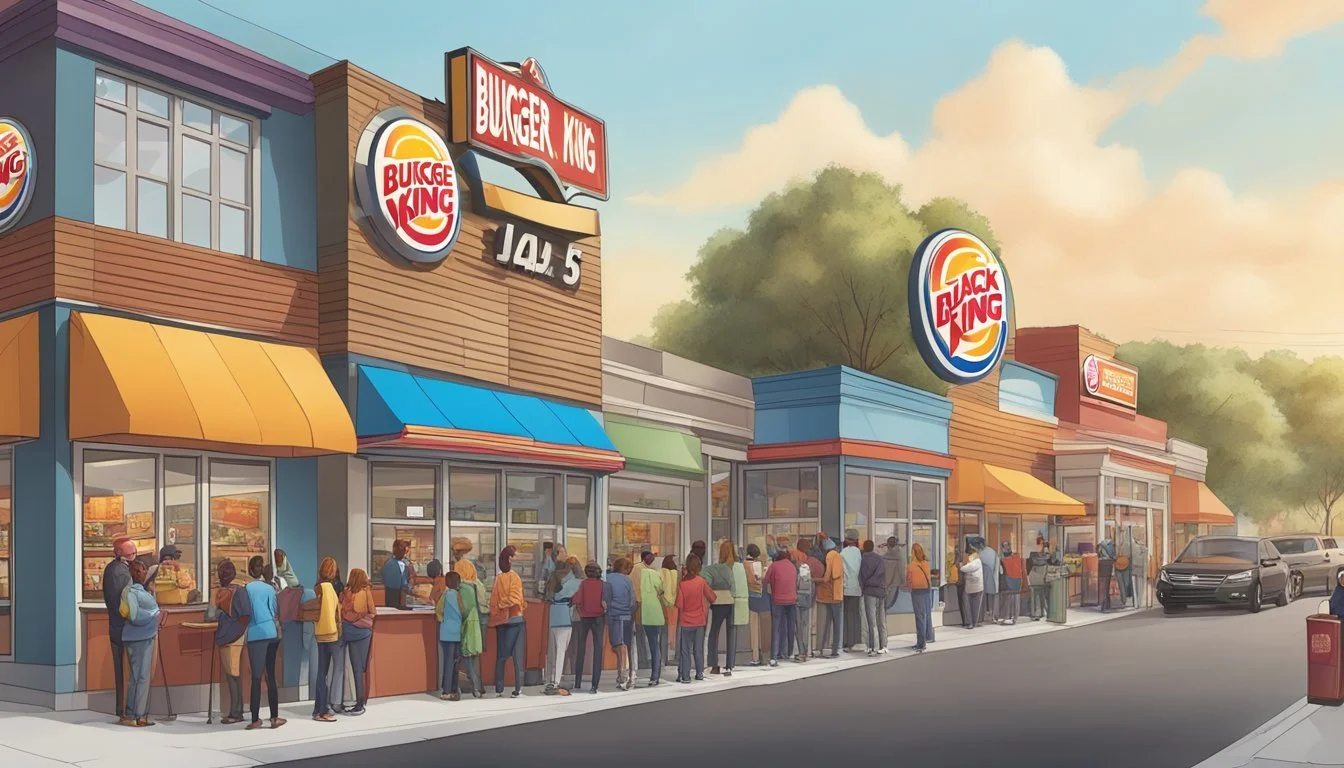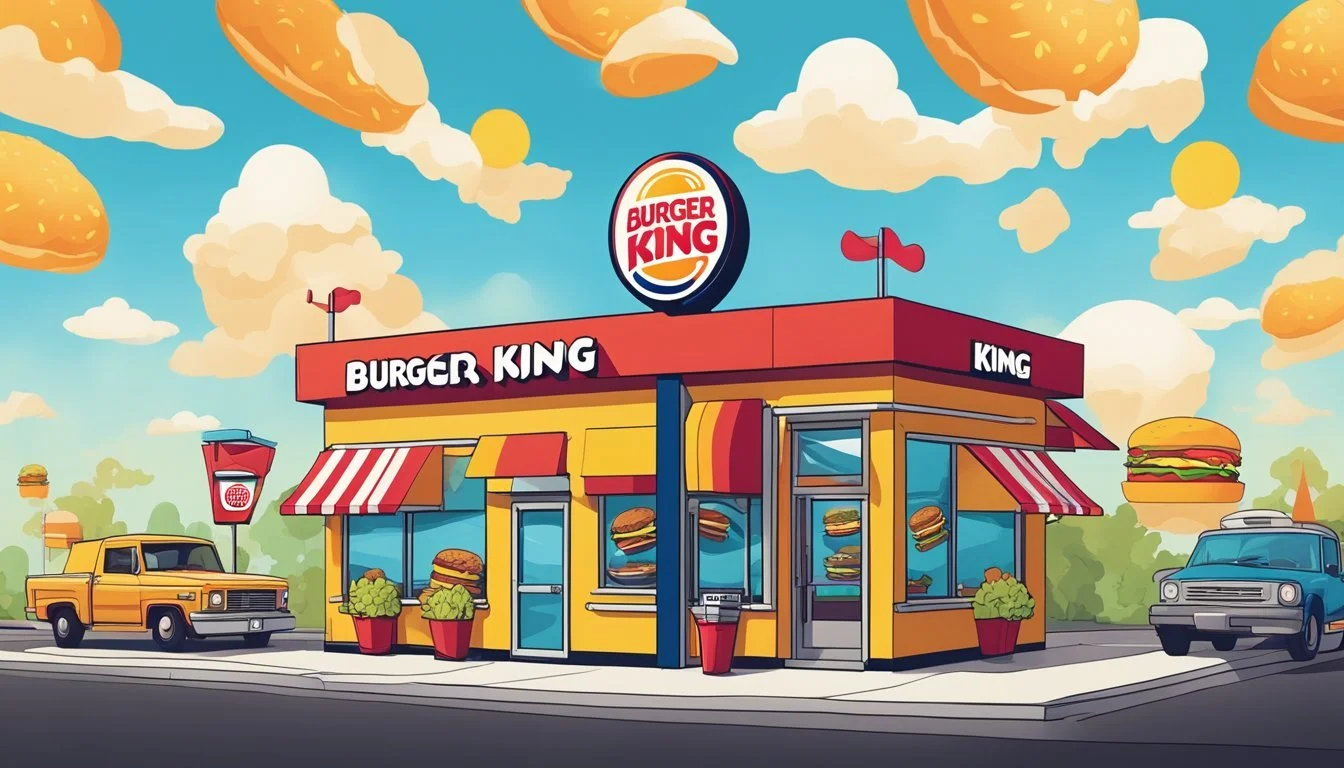Burger King vs Jack in the Box
An Unbiased Comparison of Burger Giants
In the competitive world of fast food, Burger King and Jack in the Box stand out as major players with their own unique offerings and loyal customer bases. While Burger King has established itself with its signature flame-grilled burgers such as the iconic Whopper, Jack in the Box is known for its diverse menu and cost-effective options.
Consumers often debate which burger joint is superior, considering various factors such as menu diversity, pricing, and the quality of ingredients. Burger King touts more frequent discounts and promotional deals, along with a more substantial vegetarian selection, enhancing its appeal to a broader audience. Conversely, Jack in the Box is recognized for its lower price points, potentially offering better value for budget-conscious diners.
The question of which restaurant is better does not have a one-size-fits-all answer, as preferences vary among patrons. Some favor Burger King for its flame-grilled taste and juicy burgers, while others prefer the variety and pricing at Jack in the Box. Ultimately, the choice between Burger King and Jack in the Box may boil down to personal taste and the individual priorities of the diner.
History and Background
Comparing Burger King and Jack in the Box begins with understanding their origins and the paths they've taken to become recognized food chains in America.
Burger King's Journey
Burger King began its operation in 1954 in Miami, Florida, founded by James McLamore and David Edgerton. The founders were pioneers in the fast-food industry, implementing revolutionary practices like the two-way drive-through and the flame grilling method. The Whopper, introduced in 1957, became synonymous with the brand and solidified its place in the burger market. Throughout the decades, Burger King has expanded globally, shaping its identity through persistent franchising and menu innovations.
Jack in the Box's Evolution
Jack in the Box was established in 1951 by Robert O. Peterson in San Diego, California. It differentiated itself with a drive-through service that included a two-way intercom, a concept that was ahead of its time, and an innovation setting the precedent for modern fast-food service. This chain quickly became popular across the American West Coast, with expansion efforts that eventually brought the brand to a national audience. Jack in the Box's menu has evolved substantially over the years, offering diverse options well beyond traditional burgers and fries.
Menu Offerings
When comparing the menu offerings at Burger King and Jack in the Box, one will notice distinct differences in their burger varieties and the breadth of non-burger items each provides.
Burger Varieties
Burger King offers a variety of burgers, including flame-grilled options that tend to be a defining characteristic of their brand. Their burgers often include ingredients such as beef patties, cheese, and lettuce, and they provide a selection for vegetarians as well. Jack in the Box, on the other hand, is known for its diverse range of burger offerings, including the Buttery Jack burgers with a buttery bakery bun, a signature beef patty, and various toppings.
Non-Burger Items
Apart from burgers, both chains offer an array of non-burger items. Burger King boasts a vegetarian menu, as well as sides like fries and chicken sandwiches. Additionally, they have shakes to complement their main dishes. Jack in the Box is unique with its taco offerings, which have been a popular item for the chain. They also serve a variety of sides, chicken choices, sandwiches, and shakes, providing a comprehensive menu that goes beyond just burgers.
Nutritional Value
When comparing the nutritional value of burgers from Burger King and Jack in the Box, the focus is primarily on the calories, and availability of health-oriented alternatives which may be better suited for individuals paying attention to their diets.
Caloric Consideration
The overall calorie count of a burger can vary greatly depending on its size and the condiments included. For instance, Jack in the Box offers the Jr. Jumbo Jack, which contains approximately 400 calories, featuring 25 grams of fat and 31 grams of carbohydrates. In terms of Burger King, a standard Whopper without cheese packs around 657 calories, with roughly 40 grams of fat and 49 grams of carbohydrates.
Health Conscious Options
In the realm of health-conscious choices, both chains provide options that are better for those looking to maintain a balanced diet.
Jack in the Box:
The Jr. Jumbo Jack is considered a lighter choice, with a lower calorie profile compared to some other menu items.
Burger King:
Often introduces alternative meat options, such as plant-based burgers catering to those who prefer vegetarian choices with potentially lower saturated fat contents.
Promotes meals with fewer calories, aiming to improve the quality of fast food while still focusing on taste.
Both restaurants accommodate consumers by offering fresh lettuce and customizable toppings, allowing patrons to opt for healthier condiments. The quality of meat is also a consideration; premium offerings like Angus beef might signal a higher-quality burger, which some argue provides a better nutritional profile due to leaner meat cuts. Options for cheese, including lower-fat varieties, give customers further control over the health aspects of their meal.
Taste and Quality
In the battle for burger supremacy, Burger King and Jack in the Box present unique offerings in taste and quality that cater to a diverse clientele.
Burger Taste Test
Burger King's flagship Whopper is known for its flame-grilled flavor. The burger features juicy meat, a fresh bun, and high-quality ingredients, making it a strong contender in the taste department. Jack in the Box differentiates itself with items like the Smashed Jack, albeit at a higher price point compared to similar offerings from its competitors, indicating a confident position in the tastiness of their product.
Sides and Alternatives
Burger King:
Fries: Salted, crispy, and golden.
Vegetarian Options: Offers a variety beyond just meat-based products, with significantly more choices.
Promotions: Often has discounts making sides more accessible.
Jack in the Box:
Tacos: An alternative to traditional burger fare, bringing variety to the menu.
Fries: Lacks the frequent promotions that Burger King offers, possibly affecting the value perception.
Both establishments serve up their own take on fries, but Burger King tends to offer more frequent discounts and promotions, enhancing the appeal of their sides. When it comes to alternatives like tacos, Jack in the Box provides additional variety to those looking beyond the burger.
Price and Value
When considering the price and value of offerings from Burger King and Jack in the Box, customers typically find a contrast in the cost-effectiveness and the promotions available at these fast-food giants.
Cost of Burgers
Burger King's menu features a variety of burgers with prices varying largely across locations and seasonal specials. On the more economical side, one can find basic burgers such as the Whopper Jr. or cheeseburgers costing in the range of $1 to $3. In comparison, Jack in the Box offers its basic Jumbo Jack or the classic cheeseburger at similar price points. Consumers have observed that Jack in the Box's upper-tier burgers often match or exceed the price range of their Burger King counterparts, with premium items pushing the upper price limit.
Deals and Discounts
Burger King distinguishes itself with frequent discounts and special promotions. Customers can often find coupon codes and deals, like two-for-one offers or meal deals via the BK app or other coupon services. Both restaurants have been known to run special promotions tied to events or seasons, but Burger King has a noted presence in this aspect with its discount policies for seniors and veterans.
Jack in the Box occasionally rolls out its own deals, although perhaps with less frequency. The focus of Jack's promotions can be on their taco offerings or combo meal deals that bundle burgers with drinks and fries, providing a decent value proposition for anyone looking for a full meal option.
Customer Experience
In determining which burger joint stands out in customer experience, one must consider not only the quality of food but also the ambiance of dining and the swiftness of service.
Dining Atmosphere
Burger King and Jack in the Box offer distinct dining experiences. Burger King's locations commonly have a familiar and consistent design with a focus on the flame-grilled process it's known for. The restaurant's interior typically features seating arrangements suitable for individuals and families. On the other hand, Jack in the Box tends to have a more varied atmosphere, sometimes reflecting the local vibe of its numerous locations. Both businesses maintain cleanliness and a welcoming environment, but the individual preference for Burger King's uniformity or Jack in the Box's variety will differ among customers.
Service Speed and Efficiency
The efficiency of service at Burger King and Jack in the Box can be a deciding factor for many customers. As fast-food establishments, both prioritize quick service. Burger King is recognized for its fairly rapid preparation and service, owing to its streamlined menu and cooking processes. Jack in the Box is often praised for its efficient service, even though the menu is more diverse and includes not just burgers but also an array of other fast-food staples.
Burger King:
Speed: Generally fast service
Menu Streamlining: Focused menu for expedited orders
Jack in the Box:
Speed: Competitively quick service across a varied menu
Menu Diversity: Offers a wider range of items potentially affecting service time
Each business strives to provide quick service, but the range of offerings at Jack in the Box could introduce variability in wait times. The efficiency at both establishments is generally regarded as satisfactory by the industry standards.
Brand Presence
The presence of Burger King and Jack in the Box in the market is noticeable through their marketing efforts and the share of the fast-food industry they hold.
Marketing and Advertising
Burger King has established a strong marketing presence with eye-catching campaigns and frequent promotions. They stand out with bold maneuvers like cheeky social media strategies aimed to engage customers directly and often humorously. On the other hand, Jack in the Box traditionally aims for a more irreverent tone in its advertising, sometimes leveraging its late-night dining options to attract customers with a different approach than competitors like McDonald's and Taco Bell.
Market Share and Popularity
Comparing the market share and popularity, Burger King is one of the largest global fast-food chains with a significant following, often directly competing with giants like McDonald's. Jack in the Box, while a notable brand within the United States, has a smaller footprint with prominence in particular regions. Its presence is less international than Burger King, making it more of a niche competitor in the global fast-food market which includes other players like White Castle, Dairy Queen, and the aforementioned Taco Bell.
Consumer Loyalty and Perception
In evaluating Burger King and Jack in the Box, consumer loyalty and perception play pivotal roles. Satisfaction ratings and the ability to retain repeat customers are key indicators of a brand's success and reputation.
Satisfaction Ratings
Burger King and Jack in the Box have their own sets of loyal customers, with each brand scoring differently in various aspects of customer satisfaction. Employees at Jack in the Box reportedly rate their experience slightly higher than those at Burger King, with a 1% difference in favor of Jack in the Box; 54 to 53 respectively. This internal satisfaction can translate into the customer experience, potentially impacting consumer loyalty.
Repeat Customers
The frequency of discounts and promotions can be a major factor in bringing customers back to a restaurant. Burger King is noted for offering more frequent discounts and promotions than Jack in the Box, which may lead to a higher rate of repeat customers. Additionally, Burger King provides certain discounts that appeal to specific demographics, such as seniors and veterans, which could bolster consumer loyalty further.
Overall Comparison
The debate over Burger King versus Jack in the Box often centers around factors such as taste, quality, price, and number of locations, with each brand having distinct advantages.
Pros and Cons of Each
Burger King
Pros:
Known for frequent discounts and promotions.
Provides a more extensive vegetarian menu.
Generally gives better delivery options.
Offers senior and veteran's discount policies.
Cons:
Prices for the cheapest items may be higher compared to Jack in the Box.
Jack in the Box
Pros:
Typically has goods that are budget-friendly.
The high-end menu items are considered more upscale in comparison.
Cons:
Less frequent promotions and discounts than Burger King.
A smaller selection of vegetarian options.
Final Verdict
When pitting Burger King against Jack in the Box, the choice between the two may boil down to specific preferences and needs. Burger King appears to have a slight edge in terms of menu variety, particularly for those seeking vegetarian options and regular discounts. Jack in the Box is notable for its more budget-conscious offerings and possibly higher-end menu items. Each restaurant has a strong presence with numerous locations, although exact numbers may vary regionally. Taste and quality are subjective; however, reports indicate that both chains have loyal followings that swear by their signature flavors.
Conclusion
When choosing between Burger King and Jack in the Box, customers have distinct factors to consider. Price points suggest Jack in the Box may be more budget-friendly, with their lowest priced items being notably less expensive compared to Burger King's cheapest options.
In terms of promotions, Burger King appears to take the lead, offering more frequent discounts as well as special policies for seniors and veterans. Those seeking vegetarian options might also prefer Burger King, given its more robust selection in this category.
Delving into delivery, once again, Burger King provides stronger delivery options, increasing accessibility for customers who prefer to receive their meals at home.
When assessing food quality, Jack in the Box's offerings, such as their larger tacos and the newly introduced Smashed Jack burger, have been received positively. Comparatively, the taste and size of Burger King's items might not measure up to its competitor according to some customer reviews.
To summarize, Jack in the Box could be the go-to for those prioritizing a gentler impact on their wallet and an appreciation for a hearty burger, while Burger King may appeal to those seeking variety, particularly in vegetarian choices, and better accessibility through their delivery services. The decision ultimately rests on the individual's personal preference, budget, and the importance of a versatile menu.










